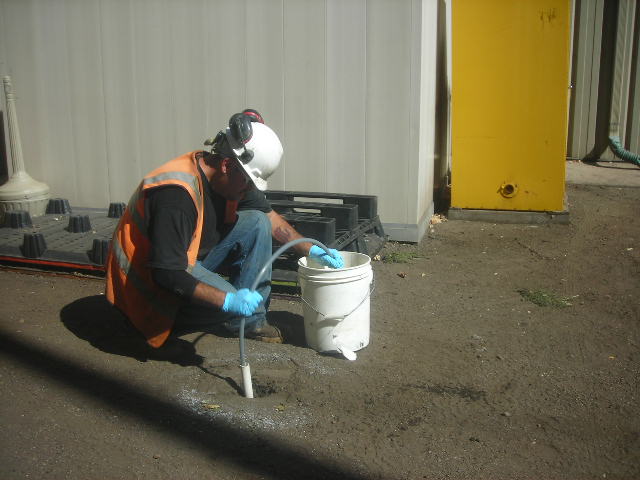
Historic research as part of a Phase I performed by others included a review of Sanborn Fire Insurance Maps shown here from 1951 and 1974.
A former iron foundry with “earth” floors, a “cupola” furnace, and “iron” storage areas were mapped at what is today a light manufacturing facility.
The Phase I determined that this former usage as a foundry constituted a “recognized environmental condition” and recommended that a Phase II be performed.
A Phase II was performed by Sundance to evaluate the risk of residual heavy metals concentrations at the property.
A drilling program was established to test for heavy metals in soils and groundwater around the former foundry shop area and its cupola furnace. Most of the test locations were now indoors and beneath thick concrete floor slabs.

The limited access to the interior of the facility and low overheard clearance in the shop areas made the use of this portable hydraulic hammer direct-push drill rig ideal for collecting shallow soil samples and installing temporary groundwater wells.

Soil core samples were retrieved in clear acetate sleeves in 4 feet lengths allowed for visual inspection of the sub-soils. Debris such as brick and wire helped to establish the working ground surface of the former foundry and its yard.

Groundwater samples were collected from the temporary wells. Soil and groundwater samples were laboratory-analyzed for 8 RCRA heavy metals plus Iron, petroleum hydrocarbons such as oil and grease, and volatile organic compounds (VOCs).
Only limited concentrations of heavy metals were detected in shallow soils at the former iron foundry property. The Colorado Department of Public Health and Environment (CDPHE) reviewed the results, and concurred that in-place management of low concentrations of Arsenic in soil was appropriate, as they were under concrete slabs and within the range of natural background levels. Based on these results, the State required “No Further Action” by the property owner and the pending property transaction was completed.
